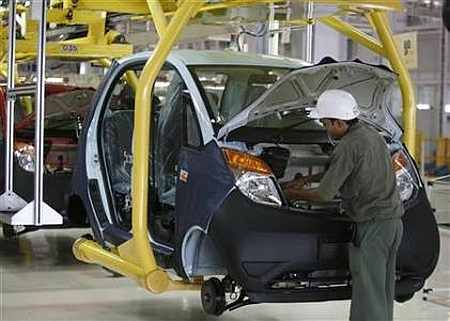 The macroeconomic data releases on Friday - inflation and industrial production - suggest the structural imbalances in the economy have not been eliminated.
The macroeconomic data releases on Friday - inflation and industrial production - suggest the structural imbalances in the economy have not been eliminated.
Industrial production growth as measured by the Index of Industrial Production (IIP) slumped to 0.5 per cent in July from 3.4 per cent in the previous month. While economists were expecting industrial output to decline, the July figure is well below the Street’s estimate of two per cent.
Consumer Price Index (CPI)-based inflation in August also gives little comfort, as it eased to 7.8 per cent, a tad below the previous month’s 7.96 per cent.
While CPI-based inflation continues to be marginally below the Reserve Bank of India (RBI)’s target of eight per cent in 2015, economists believe inflation is still high, given the current environment.
Dhananjay Sinha, economist and strategist at Emkay Global, says: “The data do not reflect that there is an inflection yet and that RBI will hold on. For the current level of growth, the inflation is very high. Lower growth and poor demand should reflect in prices but that is not happened. There is no comfort on inflation yet and the central bank is unlikely to ease.”
The buoyancy seen in industrial output in the first quarter of FY15 was largely due to higher consumption followed by excise duty cuts and higher government spending. Also, export orders contributed but with these moderating, the second quarter output is expected to remain between 1.75 per cent and two per cent.
Clustering of demand and excise duty cut led to demand improvement in consumer demand but industrial data for July shows consumer durable growth continues to be weak.
The positive surprise witnessed in the first quarter is unlikely to persist. Consequently, economic growth is expected to remain in the range of 5.2-5.5 per cent and not inch closer to six per cent.
The inflation print continues to look worrying. In August, a large part of the rise in prices has been driven by a 16.8 per cent increase in vegetable prices.
Though core inflation has declined to 6.9 per cent from 7.1 per cent, it is evident food prices will continue to be a problem for the government. So far, there is no evidence of the government coming up with a solution to tame this. For now, RBI will continue to hold rates, till there is greater comfort on prices.










